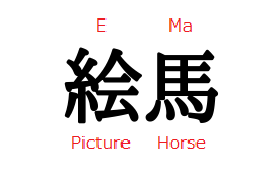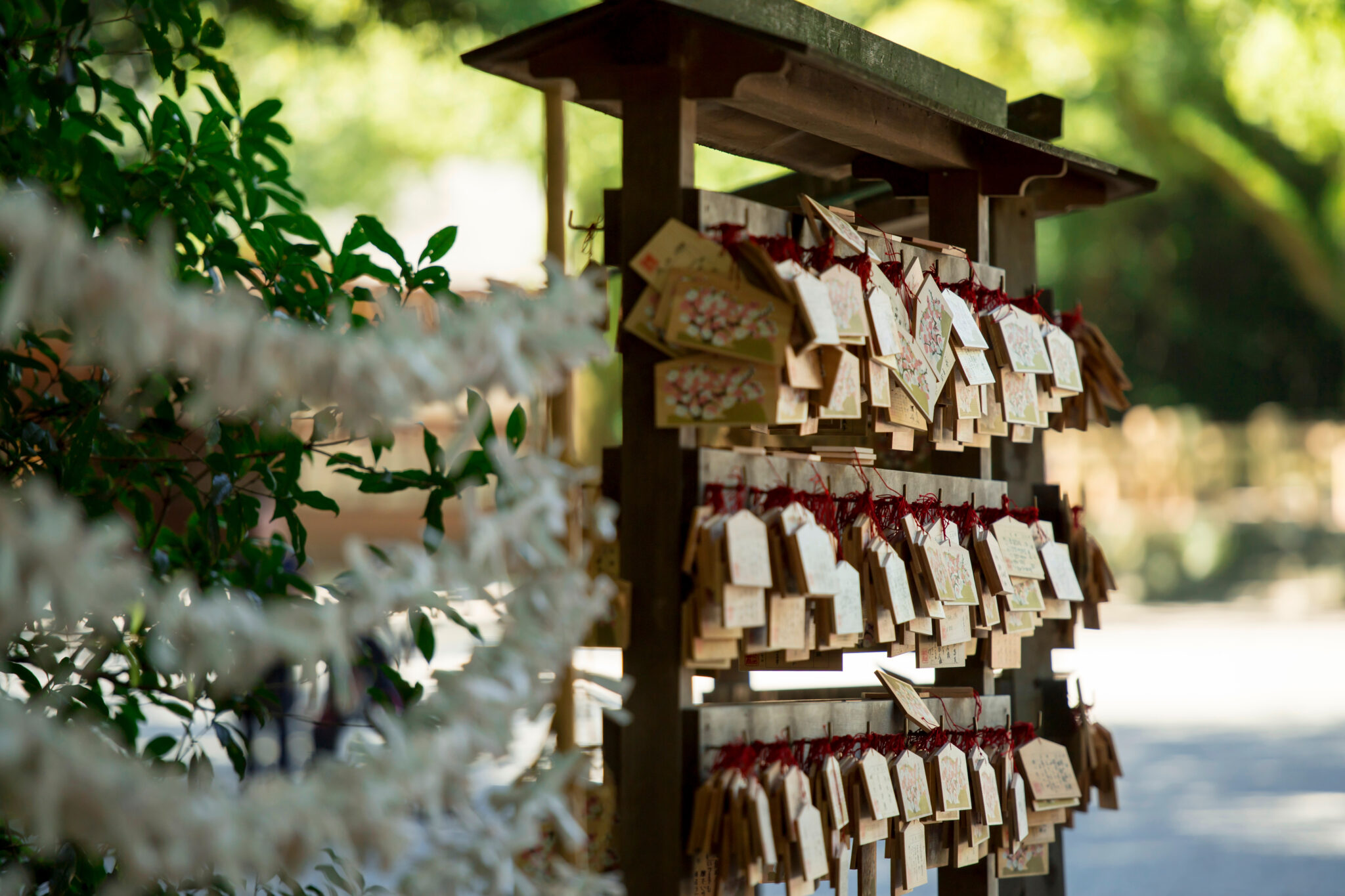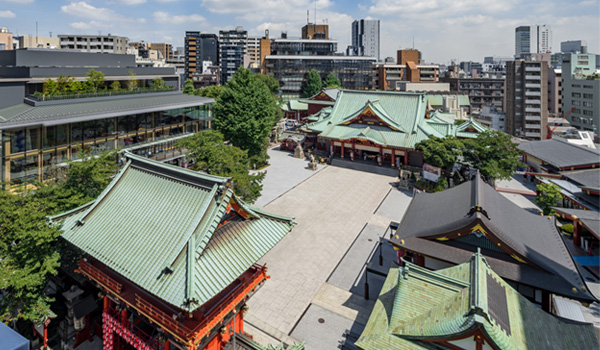Ema (絵馬, lit. “picture-horse”) are small wooden plaques, common to Japan, in which Shinto and Buddhist worshippers write prayers or wishes. Ema are left hanging up at the shrine, where the kami (spirits or gods) are believed to receive them. Typically 15 cm (5.9 in) wide and 9 cm (3.5 in) tall, they often carry images or are shaped like animals, or symbols from the zodiac, Shinto, or the particular shrine or temple. In ancient times, people would donate horses to the shrines for good favor; over time this was transferred to a wooden plaque with a picture of a horse, and later still to the various wooden plaques sold today for the same purpose. Once inscribed with a wish, ema are hung at the shrine until they are ritually burned at special events, symbolic of the liberation of the wish from the writer.
Wikipedia
Interpretation by the viewpoint of word (Kanji)
Let’s look at the kanji characters on “Ema”. “E” means picture. “Ma” means horse. In other words, “EMa” means a picture horse.
In ancient times, people would donate horses as vehicles of “Kami” to the shrines for good favor. As time went on, those who could not donate horses began to donate a statue of horses made of wood, paper, or clay, and later, that was transferred to a wooden plaque with a picture of a horse. And the ema then serves to deliver the wishes to Kami.





Comment List